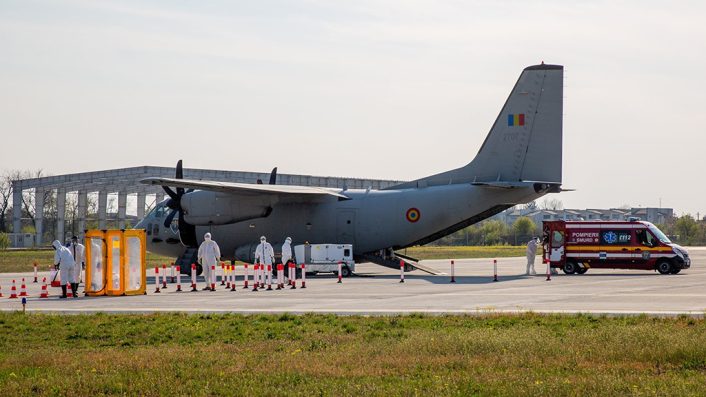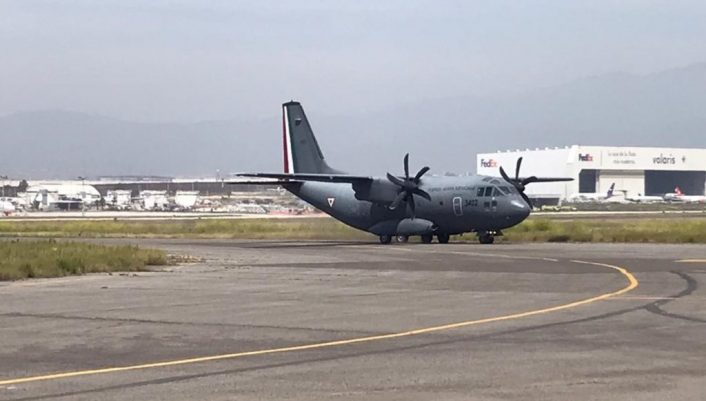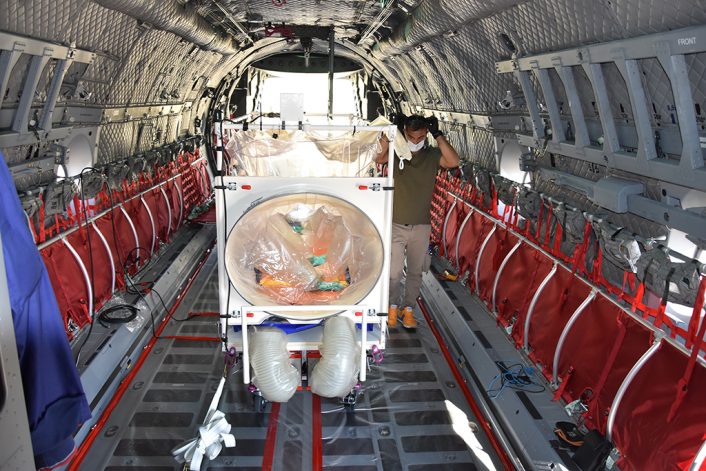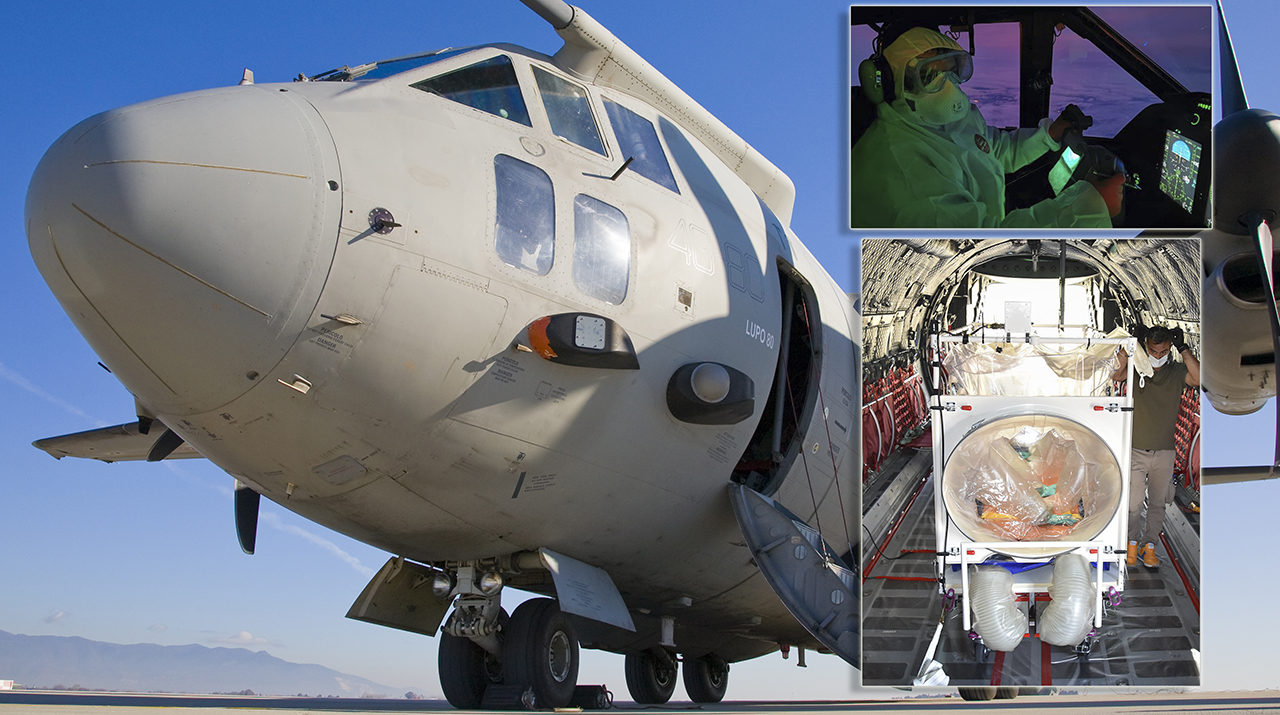Leonardo has tested integration of ATIs (Air Transit Isolators) aboard the multi-mission tactical transport aircraft.
Throughout the COVID-19 pandemic, C-27J Spartans in service with the air forces of nine countries – Italy, Bulgaria, Lithuania, Romania, Slovakia, Greece, Mexico, Peru and the United States – have carried out several critical support missions across Europe, Latin America and the US.
The aircraft have been used to repatriate citizens unable to travel home to these countries due to the lockdown, transport highly infectious patients in special bio-containment stretchers, and have carried teams of medical specialists, critical medical equipment and protective devices.



Leonardo, the multinational company specialising in aerospace, defence and security, that manufactures the Spartan, has recently conducted a series of tests for the integration of an Aircraft Transit ISOlator (A.T.ISOL) biocontainment system aboard the multi-mission tactical transport aircraft. According to the Italian company, the tests were carried out at Leonardo’s Caselle Sud plant, near Turin, in northwestern Italy, with the support of system supplier OMP, using an aircraft that is soon to be delivered to a customer air force.

As we have already explained in detail in a previous article about the Biocontainment missions published at The Aviationist in February 2020, ATIs are the most effective medium/long-range transport and first-aid solution for patients infected with potentially life-threatening infectious diseases (such as Ebola, MERS, SARS and Covid-19) and ensure total protection for the medical personnel and the crew against exposure to pathogens.
An ATI is a self-contained isolation facility designed to transport safely a patient during air evacuation, protecting healthcare personnel, air crew and the aircraft from exposure to the infectious agents. The ATI provides a microbiologically secure environment using a multi-layer protection: around the rigid or semi-rigid frame, a PVC “envelop” surrounds the patient while allowing observation and treatment of the patient in isolation and an Air Supply Unit puts the ATI unit under negative pressure, with HEPA Inlet and Outlet filters that filter out 99,97% of particles 0.3mm and larger preventing the passage of potentially infected micro-particles. Four 12V batteries with an operating time of 6 hours each provide the ATI 24 hours independent time.
The tests carried out at Caselle validated the special medical transportation configuration with two A.T.ISOL units installed in the C-27J. Using this system, the C-27J can be transformed into an intensive care unit when required.













